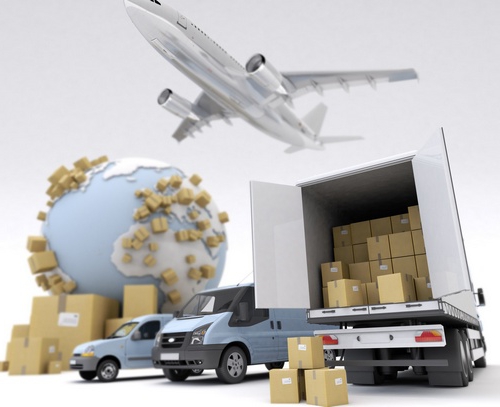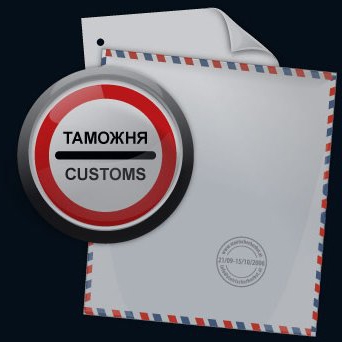Until recently, the basic customs rules of Russia were contained in the Customs Code. It was adopted and entered into force in 2003. However, after the creation of the Customs Union, a new act was approved. The vehicle includes the Russian Federation, Belarus and Kazakhstan. The participating countries in 2010 adopted the Unified Customs Rules. We consider them further in more detail. 
General information
After the new Customs regulations were adopted, in order to avoid confusion, the FCS issued an explanatory letter. It indicated the norms of domestic TC, which are not applied. The Letter also outlined those customs regulations of the Customs Union that are used instead. It is worth noting here that the decisions adopted by the CU Commission are binding in nature and have a direct action status, do not require ratification. The Letter noted more than 270 items, each of which explained in which part of the norm the articles of the Labor Code of the Russian Federation had no effect. Summarizing the above data, experts concluded that more than 90% of the provisions of the domestic Code are no longer valid. The exceptions were the norms by which the export of goods from the Russian Federation to the countries of the CU of goods was regulated, according to which duty rates were established until July 1, 2010.
Disputes
With the creation of the Customs Union, the question arose of whether a body would be formed to conduct proceedings on problems arising throughout the Customs Union. FCS experts explained that the EurAsEC Court will be formed. This body will, in particular, consider disputes arising between the member states of the Customs Union. 
Positive aspects of the adoption of TC TC
General Customs rules have created certain advantages for entrepreneurs and firms that either directly carry out activities in the relevant field, or are associated with it through their counterparties. First of all, it concerns the terms. For example, the time for making decisions on the release of cargo has been reduced to one day (instead of three), the period for presenting products during preliminary declaration has been increased to 30 days. In addition, the deadline for filling out the declaration itself was reduced to 2 days, and the time for paying taxes and duties was equal to the period of temporary storage (up to 4 months). The positive aspects should also be noted the exclusion of the norm on the use of an insurance contract as a guarantee of deductions of payments, carriers are entitled to move around the territory of the Customs Union without the application of domestic control of each participating country. The adopted Customs rules for the import of goods to other countries also allow amendments to the declaration both before and after the release of the goods. Thus, if earlier, when exporting products to third countries through Belarus and Kazakhstan, it was necessary to confirm the fact of sending it from the Russian Federation, now only transportation outside the CU zone is being certified. 
Declaration Features
In fact, the rules are unified with the creation of the vehicle. Customs declarations, therefore, can be submitted to any authority located in a common economic territory. For this, the EurAsEC Interstate Council must make a separate decision. At the moment, the following situation has developed:
- According to the general Customs rules of import, consular offices, diplomatic missions, other official bodies of foreign countries, international organizations of the CU members submit a declaration to the authorized body of that member state of the Customs Union in whose territory they are located.
- The declarant submits documents for products to the state body, according to the law of which he is formed and registered or within which he resides permanently, except when:
- an individual carries out the movement of products for personal use;
- the organization has a representative office in the territory of the state party to the Customs Union;
- a person may dispose of products not within the framework of legal relations in which one party is a representative of a country that is a member of the CU;
- Customs transit is carried out.

New forms of documentation
Customs rules of the Customs Union provide for the examination of samples and samples of products. The FCS, having published a Letter of July 12, 2010, temporarily put into circulation the following documents:
- Decision on the appointment of expertise.
- The act of sampling and sampling.
- Expert opinion.
- Data from the results of the study.
When crossing external borders, it is necessary to fill out a passenger declaration. Its form and drafting procedure are approved by the Commission. A form supplementing the declaration has also been adopted. It indicates the presence of:
- coins (except those made of precious metals) and banknotes, traveller's checks in an amount that exceeds 10 thousand dollars in equivalent;
- other cash in the form of documents (securities, bills, bank checks).
The customs rules for the export of currency do not provide for the filling out of a declaration by individuals when moving cash, securities, traveler's checks between the member states of the CU. 
Types of records
Customs regulations provide for the following declarations:
- For goods.
- Passenger.
- On vehicles.
- Transit.
On January 1, 2011, a declaration on goods of a new form entered into force. Along with this, an Instructions for filling out a document was introduced. In addition, the TC TC provides for electronic and paper forms of declaration. Submission of written documentation must be accompanied by the provision of an electronic copy, unless otherwise provided by law. A second copy is not needed when submitting a declaration for a car, passenger document, list of goods or a written statement.
Important point
In ch. 3 TC TC provides that a legal entity receives the status of a store owner by duty free after it is included in the appropriate registry. Previously, the notification procedure for its opening was in effect. It was installed in Art. 261 of the Labor Code of the Russian Federation. 
When does not need a declaration?
According to the decision of the CU Commission, which regulates the use of transportation (transport), commercial or other documents for the declaration of goods, subject to a number of conditions, these papers may be applied with an attached list of goods or a written statement. The latter, drawn up in the prescribed form, replaces the paper with express freight. Regarding other objects, it is allowed to fill out an application in any form, however, the data provided for by the TC TC must be indicated. The list of goods can, for example, be provided with regard to equipment intended for festivals, cultural, religious, sporting events, concerts, demonstrations at fairs, exhibitions, media coverage of official and other events, and customs regime for a period of up to one year, if a conditional full exemption from customs taxes and duties is provided for relocated objects.
Cost of transported cargo
Previously, it included the costs of transportation, loading, unloading, transshipment of objects to the sea or airport or other place of arrival in the customs zone of the Russian Federation. Now the cost includes the cost of moving to the site on the territory of the vehicle. Special attention should be paid to exchange products. The price at which they will be sold is not known at the time of the move. The law does not provide for a special procedure for determining their value. In each case, the general rules will be used, regardless of the participants in the transaction, type of products, sources of supply, and so on. 
Product Status
With the creation of the Customs Union and the entry into force of the general Customs Code, the boundaries of the concept of "domestic product" have expanded significantly.Now, all products that had the indicated status in the territories of the participating countries are called “TS products”. Thus, products manufactured in the Russian Federation, Belarus and Kazakhstan can freely circulate within the Customs Union. The difference between the products of the CU and the countries participating in the CU is in the form of a certificate. It is issued by the chamber of commerce. As for foreign products that are imported into the territory of the Customs Union and placed under the release procedure for domestic consumption, it receives the same right to free circulation. A single register for the registration of intellectual property of participants in the Customs Union is also provided.
Tariffing
The FEA has a flat rate for the Russian Federation, Kazakhstan and Belarus. Commodity nomenclature - a systematic set of tariffs for customs duties for products that are imported into the territory of the CU from third countries. For each position, the following information is displayed:
- HS Code.
- The name of the item.
- Rate of duty. It can be indicated in euros, dollars, percent.
- Unit of measurement.
Incorrect indication of the code will cause problems with the customs authorities. In this regard, the introductory section of the CN FEA provides an interpretation of the positions. It is necessary to pay attention to this. The names of subgroups, groups and sections are provided solely for the convenience of using the document. In legal terms, the classification of goods according to the HS is carried out in accordance with the text of the position and the corresponding comment.